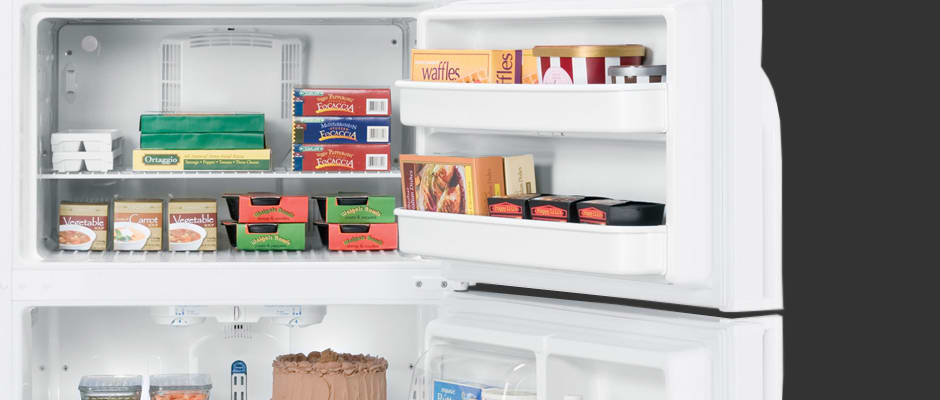Introduction
Front
{{section_header}}{{section.name}}{{/section_header}}
As the door can be installed right- or left-opening, the fridge ships with a disassembled handle, some screws and two sets of holes on either side of the unit. A GE logo and white plug are supposed to cover the holes where the handles aren't installed, but we couldn't get the plug to fit in the hole on our test unit.
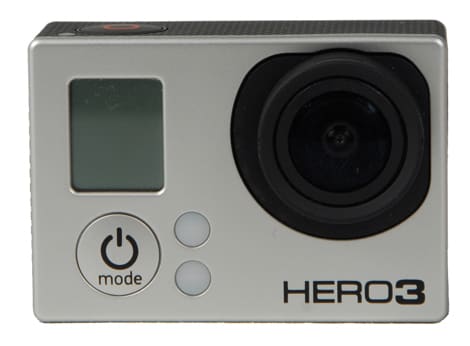
Fingerprints don't stick easily to this fridge's textured surface.


Interior
{{section_header}}{{section.name}}{{/section_header}}
Top and bottom doors open to reveal adjustable shelves and drawers, plus walled shelves on the doors.
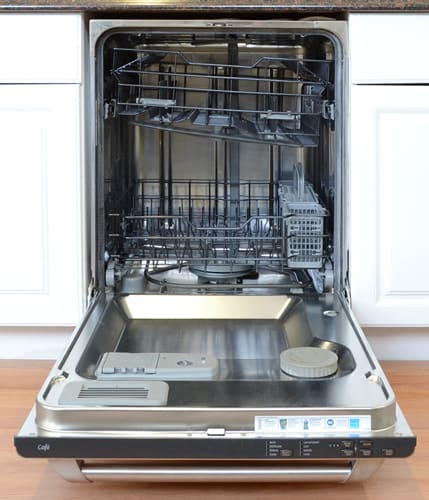
The interior of the CDWT980VSS.
The interior of the {{product.model}}'s fridge compartment features four adjustable half-width shelves, each of which sits on a ridge built into the side of the fridge's cavity and also hooks into a slat in the back of the unit. Because of their size, the shelves are light enough to easily move. One shelf has a drawer hanging from it.
Underneath, one full-width shelf tops the crisper drawers, which take some coaxing to open. They're made of thick plastic, but heavy items weigh them down. The humidity adjuster is built into the edge of the shelf above the drawers.
On the door, a dairy bin can fit snugly on the left or right side of the top shelf. Three walled shelves are removable but not adjustable. There's no icemaker to take up space.
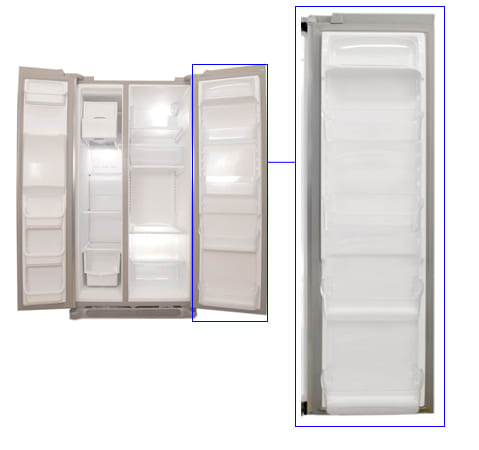
Up in the freezer, one adjustable shelf divides the main cavity widthwise.
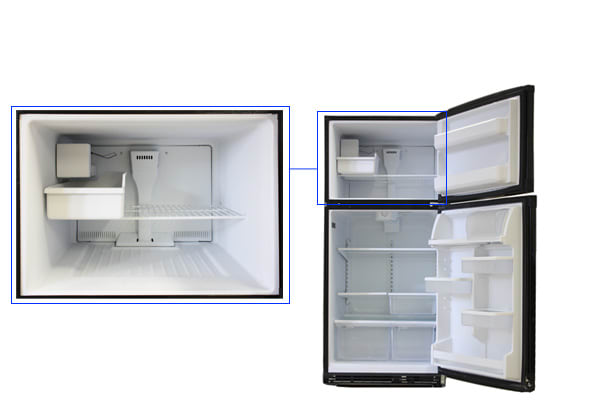
On the door, two walled shelves can be removed but not adjusted.
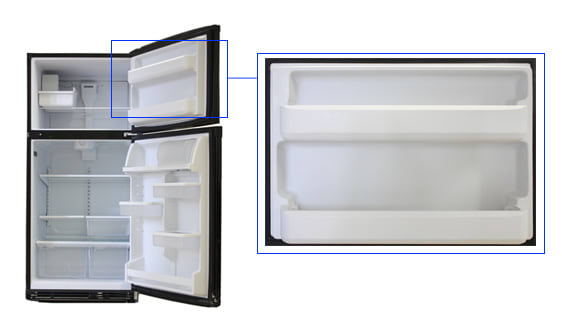
Back
{{section_header}}{{section.name}}{{/section_header}}
There's nothing on the back of this fridge.
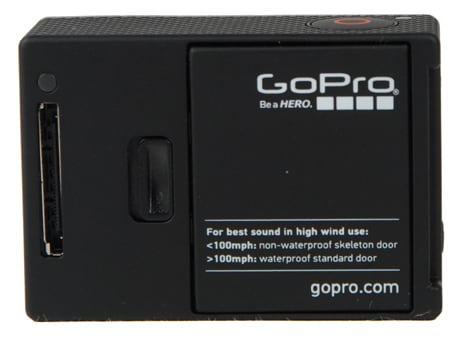
Sides
{{section_header}}{{section.name}}{{/section_header}}
The sides match the front, with the same textured white surface. There are no special features.
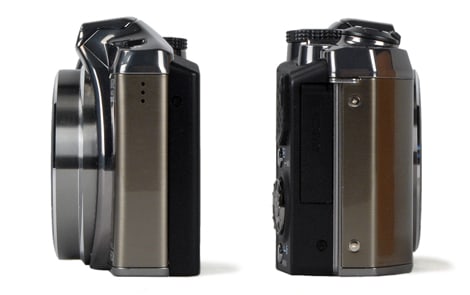
Olympus SZ-31MR iHS side views
Running Cost
{{section_header}}{{section.name}}{{/section_header}}
The {{product.name}} would cost $57.26 per year to run assuming that electricity sells for 9.1 cents per kW. That means this fridge is around average for power usage.
Power Use Per Cu Ft
{{section_header}}{{section.name}}{{/section_header}}
Different fridges are different sizes. So we can compare them all, we divide power usage by interior volume. Though it uses a decent amount of energy, the {{product.name}} does very well on this measure, with a score of 0.11 kWh per cubic foot.
Fridge Temperature
{{section_header}}{{section.name}}{{/section_header}}
In order to earn the title of "refrigerator," an appliance must keep food cold at a consistent temperature. We test this most basic function over several days by chilling simulated food packages that contain highly sensitive temperature sensors.
The {{product.name}}'s fridge didn't do the best job at keeping a consistent temperature. The food temperature varied more than two degrees in each direction, and the temperature of food packages on the middle and lower shelves dipped into the "too warm" zone 24 and 28 percent of the time, respectively. To combat this, we'd recommend setting this fridge's temperature control a little higher than the recommended "4" -- and yes, a higher number does signify a lower temperature.
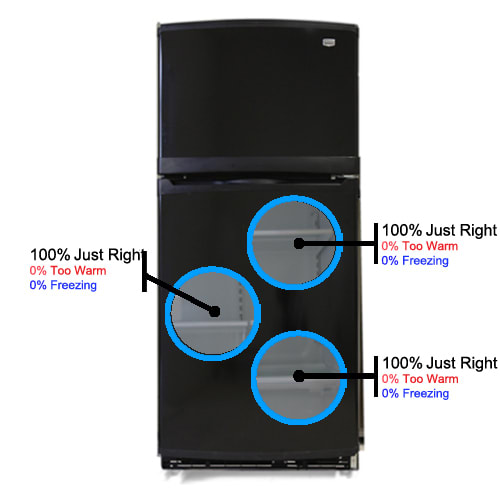
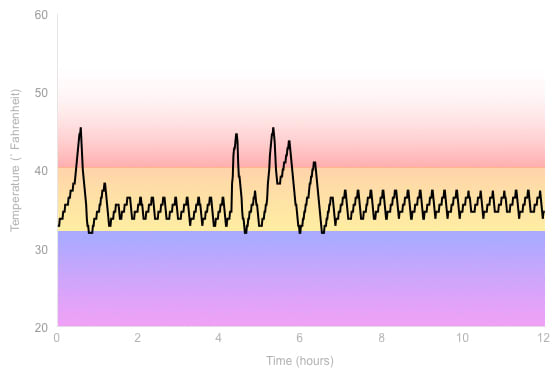
Freezer Temperature
{{section_header}}{{section.name}}{{/section_header}}
The {{product.name}}'s temperature varied more than 3 degrees during our tests, potentially forming those pesky ice crystals that cause freezer burn.
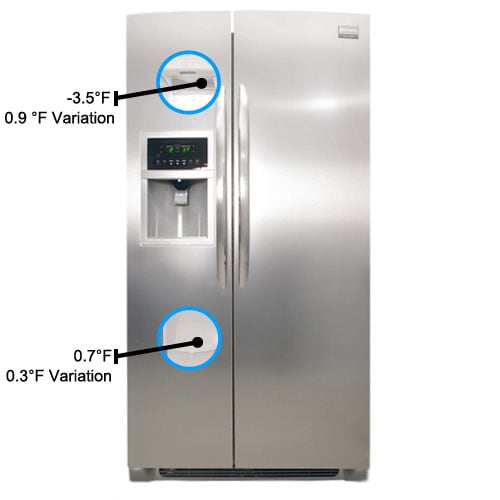
Vegetable Drawer
{{section_header}}{{section.name}}{{/section_header}}
Think about how lips get chapped on a cold day. That's what happens to fresh foods inside a refrigerator, and why fridges feature a humidity-controlled vegetable compartment. We put the {{product.name}}'s vegetable drawer to the test with a simulated vegetable made of wet floral foam to approximate the consistency and humidity of a real carrot or zucchini.
After four days, we found the simulated vegetable inside the veggie drawer of the {{product.name}} lost 0.27 grams of water per hour. That's not ideal, and it means that your fresh foods may dry out faster than in other, similar fridges.
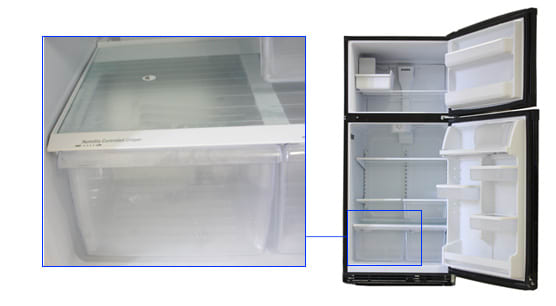
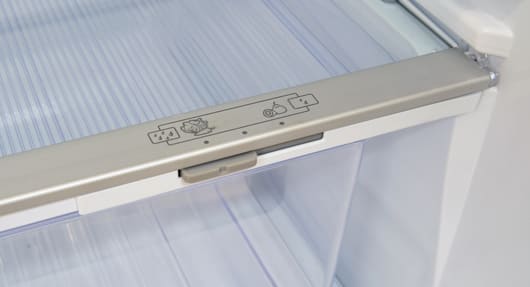
Power Loss
{{section_header}}{{section.name}}{{/section_header}}
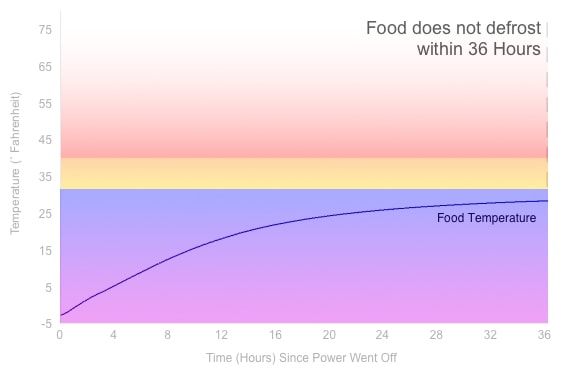
Freezing Performance
{{section_header}}{{section.name}}{{/section_header}}
The {{product.name}} did a good job on our freezing test, taking only 2 minutes shy of 2 hours to bring the center of a container of simulated food from room temperature to frozen.

Usable Space
{{section_header}}{{section.name}}{{/section_header}}
The refrigerator has four half-width shelves that can be configured at various heights or moved together to form two full-width shelves. A storage drawer hangs from one of the shelves. Below one fixed, full-width shelf are two crisper drawers.
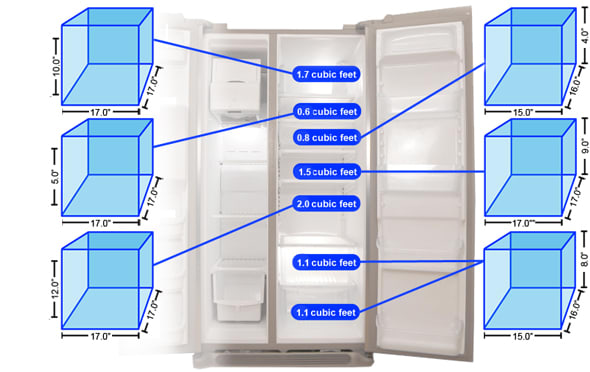
On the door, there's a dairy bin and three fixed, walled shelves. None of the shelves feel particularly sturdy, so filling one with glass jars may cause it to sag. The bottom shelf is only four inches deep and 11 inches high -- not enough space for wine or soda bottles, but a good place to put your least favorite salad dressings.
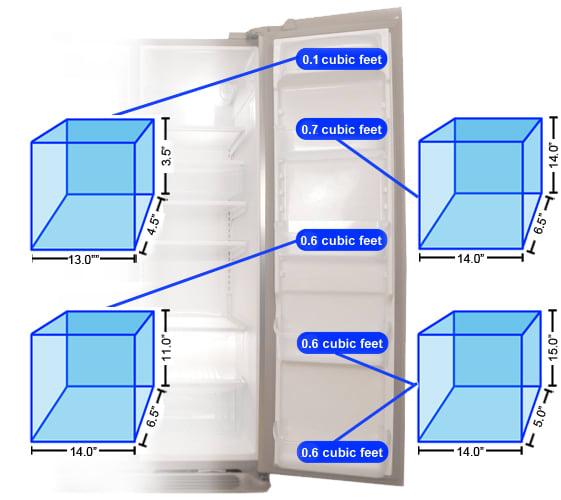
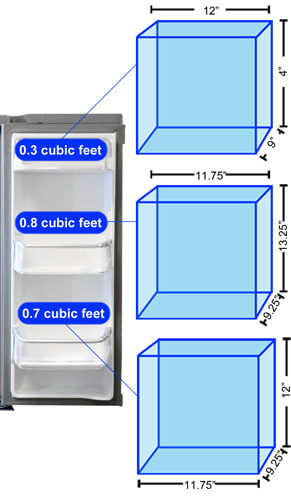
In the freezer, a single wire shelf bisects the main compartment widthwise. It can be adjusted about an inch.
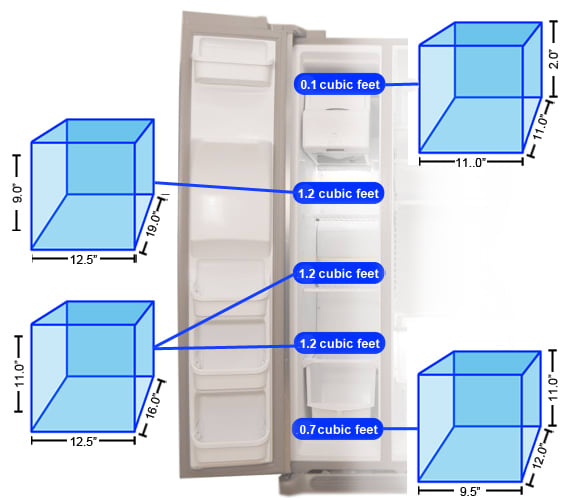
Two of the same walled shelves as in the fridge are on the freezer door.
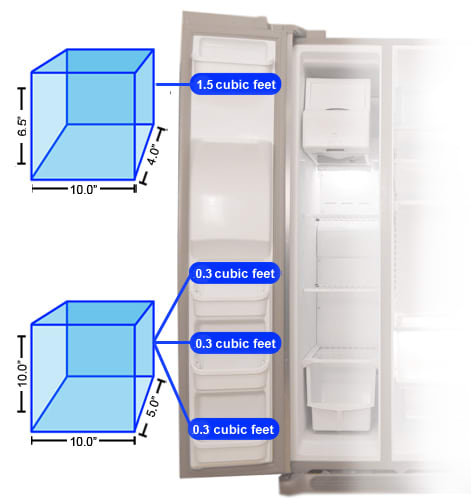
Below are the manufacturers own figures for capacity, and our own measurements for usable capacity. The manufacturers figures do not take account of the shelves, drawers and other removable features, but our measurements do account for the space these take up.
Ease of Access
{{section_header}}{{section.name}}{{/section_header}}
All the shelves in the {{product.model}} are small enough to be easily moved. Doors open easily with thick handles.
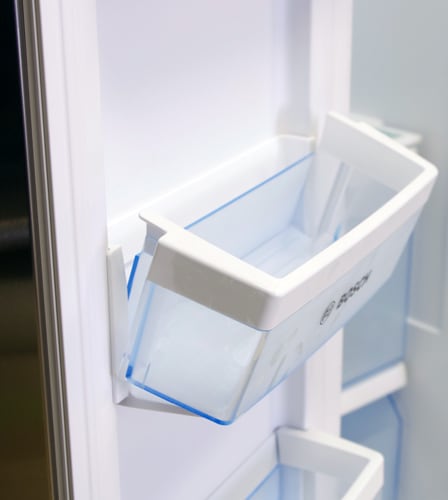
Controls
{{section_header}}{{section.name}}{{/section_header}}
This fridge has separate controls for the freezer and fridge at the top of the interior. The controls are labeled 1 through 7, with 4 recommended -- though there's no corresponding temperature for that scale.

Water Dispenser
{{section_header}}{{section.name}}{{/section_header}}

Ice Maker
{{section_header}}{{section.name}}{{/section_header}}
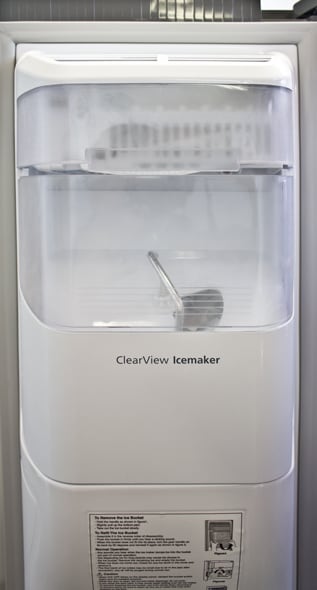
Cleaning
Noise
Other Features
{{section_header}}{{section.name}}{{/section_header}}
{{product.manufacturer_specs['Other Features Photo BROKEN?']}}
Conclusion
Energy Efficiency
When put to the test, the Energy Star rated {{product.name}} falls right in the middle of the pack when it comes to energy efficiency.
Performance
Other fridges outperform the {{product.name}} on temperature consistency. The {{product.name}}'s relatively uneven fridge and freezer temperatures may lead to prematurely spoiled soft cheeses and freezer burn.
Storage Space
The big {{product.name}} easily swallowed all that we put into it. Not having an icemaker helps with freezer storage space, too.
Usability
While the fridge cavity was readily configurable, the {{product.name}}'s fridge door, freezer door and freezer cavity all featured fixed shelves.
Meet the tester
Keith was the Editor in Chief of Reviewed's appliance and automotive sites. His work has appeared in publications such as Wired, Car & Driver, and CityLab.
Checking our work.
Our team is here to help you buy the best stuff and love what you own. Our writers, editors, and experts obsess over the products we cover to make sure you're confident and satisfied. Have a different opinion about something we recommend? Email us and we'll compare notes.
Shoot us an email